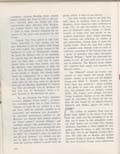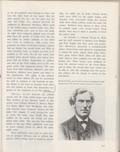
[p. 216]
The most terrible event of the Utah War took place in southern Utah at Mountain Meadows, about thirty-five miles southwest of Cedar City. To alert the settlers to the invasion of Johnston's army, George A. Smith, founder of Cedar City and apostle to the southern settlements, spent August preaching fiery sermons and reminding the settlers of past persecutions, stirring them to resist the coming enemy. About the same time a group of emigrants came through Utah en route to California, consisting of the Fancher train and a group of horsemen who called themselves "Missouri Wildcats." Smith had instructed the settlers to save all food stuffs and not to sell any to emigrants. This Missouri group missed this expected food supply and resented the Mormon action.
The "Wildcats" stirred up trouble: one claimed to have helped kill Joseph Smith; another wanted to go back and kill Brigham Young and Heber C. Kimball. Settlers believed these men poisoned a spring resulting in the death of cattle and people, and that they fed poisoned beef to Indians, causing deaths. The Indians were enraged. Governor Young wondered whether or not the Indians could be controlled. He feared for the settlers. He had hoped for an alliance between Mormons and Indians against the army if necessary.
The settlers of southern Utah were already tense. Added to the threat of an army from the north was the possibility of an Indian war at home. In this atmosphere southern Utah leaders met at Cedar City, Sunday afternoon, September 6. Some argued for vengeance, others for peace. A rider was sent to Salt Lake City to get Brigham Young's direction. The rider left on Monday and reached Governor Young at noon on Thursday. Within the hour Governor Young wrote instructions

[p. 217]
to let all emigrants pass through in peace and sent the rider back at top speed. But the rider arrived too late. On the same day the rider left Cedar City, Indians attacked the emigrants at Mountain Meadows. When word of the Indian attack reached Cedar City, Mormon volunteers were sent to bury the dead. At night three emigrants slipped away to seek help from the people of Cedar City, but one was killed by Indian ambush, so the other two fled to California. This event compounded the fears of Mormon military leaders that an Indian war would break out. With an army invading Utah, an Indian war had to be avoided at all costs. We do not know who decided what should follow, but orders were given and on Friday, September 11, Indians and men of the Utah militia went to the emigrant camp. The emigrants (about 120) were lured from their defenses, disarmed, and slain. Seventeen children were spared and taken to the settlements. The affair is the darkest event in Utah history. It can be accounted for only in relation to the hysteria of war: the threat to life from an invasion from without and Indians at home who demanded vengeance on the emigrants or on the settlers.